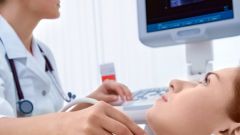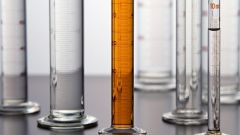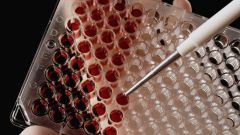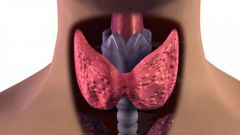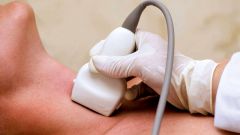Instruction
1
Blood studies of thyroid hormones for rent from Vienna in the morning on an empty stomach. The analysis is carried out in the immunology laboratory of a medical institution. A laboratory study of the functional capacity of the gland includes determining the following indicators: T3 (triiodothyronine) total and free T4 (thyroxine) total and free, TSH (thyroid-stimulating hormone of the pituitary gland), at-TG (antibodies to thyroglobulin), TPO (antibodies to tirosingidroksilazy). Triiodothyronine is a hormone released by the thyroid cells responsible for the control of redox processes in the body. The thyroxine – producing tissue of the gland involved in the metabolism of proteins in the body. T4 is 10 times more active than T3. Antibodies to thyroid peroxidase is a autoantibodies to the enzyme released by the cells of the thyroid glands, which are involved in the formation of triiodothyronine and thyroxine. Antibodies to thyroglobulin antibodies, is produced on thyroglobulin (a protein that is a precursor of hormones T3 and T4). Thyroid-stimulating hormone is a substance secreted by the pituitary gland (in the brain) and controlling its work.
2
By increasing thyroid function T3 and T4 begins to produce in large quantities, which leads to symptoms of hyperthyroidism: excessive sweating, palpitations, weight loss. When defective work function is reduced the allocation of triiodothyronine and thyroxine, which leads to the development of the disease hypothyroidism with the following symptoms: slowing of the heart rate, decrease in body temperature, lethargy. In violation of immunity, accompanied by the manifestation of its aggression against its own body tissues, increases the production of antibodies to thyroid peroxidase, which causes development of autoimmune diseases. Need to know what each laboratory has its own normal values depending on the methods of analysis. When evaluating the obtained results need to focus on the norms specified in the form of research. The averaged normal indices when testing for thyroid hormones are: TSH of 0.4 - 4.0 mu/l, T3 is 2.6 — 5.7 pmol/l, T4 - 9,0 — 22,0 pmol/l, at-TG - 0 — 18 IU/ml, TPO - < 5,6 U/ml.
3
According to the results obtained in the study, based on knowledge of the changing concentrations of hormones, we can assume the existence of the disease. When elevated levels of the hormones T3 and T4, reduced TSH levels despite normal indices of at-TG and at-TPO we can assume the existence of hyperthyroidism. Primary hypothyroidism (disease thyroid gland) is diagnosed based on the following data: T3 and T4 – normal or slight decrease, TSH increase, at-TG and at-TPO is normal. The reduced concentration of T3, T4 and TSH, normal values of at-TG and at-TPO indicate the development of secondary hypothyroidism (sources of the disease is the pituitary gland). To decrypt the received results it is necessary to address to the endocrinologist, who will appoint an additional examination and laboratory tests.


